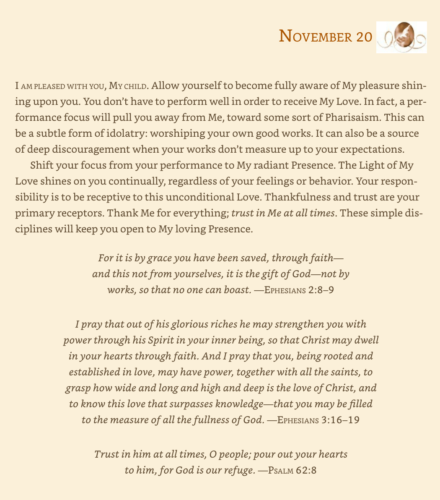God Is Being Itself
Richard Rohr teaches that all of creation is connected and interdependent, each facet bearing inherent dignity as part of the being of God. Richard explains what we can learn from the medieval idea known as the “great chain of being”:
The great chain of being was the medieval metaphor for ecology before we spoke of ecosystems. While it was structured as a hierarchy, with each link in the chain “closer” to God, I view it as a philosophical and theological attempt to speak of the interconnectedness of all things on the level of pure “Being.” Today we might call it “the circle of life.” If God is Being Itself (Deus est Ens), as both St. Bonaventure and St. Thomas Aquinas taught in the thirteenth century, then the great chain became a way of teaching and preserving the inherent dignity of all things that participate in that Divine Being in various ways. For me, it speaks of the inherent sacrality, interconnectedness, and communality of creation.
These are the links in the great chain of being:
Link 1: The firmament/Earth/minerals within the Earth
Link 2: The waters upon the Earth (snow, ice, water, steam, mist)
Link 3: The plants, trees, flowers, and foods that grow upon the Earth
Link 4: The animals on the Earth, in the skies, and in the seas
Link 5: The human species, capable of reflecting on the other links
Link 6: The heavenly realm/Communion of Saints/angels and spirits
Link 7: God/the Divine Realm/the Mystery that creates a universe as such, which needs a Center, Source, and Ground for any coherence.
Such a graphic metaphor held all things together in an enchanted universe. If we could not see the sacred in nature and creatures, we soon could not see it at all. [1]
As the medieval theologians predicted, once the chain was broken and one link not honored, the whole vision collapsed. Either we acknowledge that God is in all things, or we have lost the basis for seeing God in anything. Once the choice is ours and not God’s, it is merely a world of private preferences and prejudices. The “cosmic egg” is shattered.
Bonaventure (c. 1217–1274), who is called the second founder of the Franciscan Order, took Francis’ intuitive genius and spelled it out into an entire philosophy. “The magnitude of things … clearly manifests the immensity of the power, wisdom and goodness of the triune God, who by his power, presence and essence exists uncircumscribed in all things.” [2] Bonaventure expanded on Alan of Lille’s philosophical idea of God as one “whose center is everywhere and whose circumference is nowhere.” God is “within all things but not enclosed; outside all things, but not excluded; above all things, but not aloof; below all things, but not debased.” [3] Therefore the origin, magnitude, multitude, beauty, fullness, activity, and order of all created things are the very “footprints” and “fingerprints” (vestigia) of God. [4]
Building on a First Love
Father Richard understands the teachings of Bonaventure as a call to love all creation.
St. Bonaventure taught that to work up to loving God, start by loving the very humblest and simplest things, and then move up from there. “Let us place our first step in the ascent at the bottom, presenting to ourselves the whole material world as a mirror, through which we may pass over to God, who is the Supreme Craftsman,” he wrote. And further, “The Creator’s supreme power, wisdom and benevolence shine forth in created things.” [1]
We can apply this spiritual insight quite literally. Don’t start by trying to love God, or even people; love elements and rocks first, move to trees, then animals, and then humans. Angels will soon seem like a real possibility, and God is then just a short leap away. It works. In fact, it might be the only way to love, because how we do anything is how we do everything. In the end, either we love everything or there is reason to doubt that we love anything. This one love and one loveliness was described by many medieval theologians as the “great chain of being.”
Creation—be it planets, plants, or pandas—was not just a warm-up act for the human story or the Bible. The natural world is its own good and sufficient story, if we can only learn to see it with humility and love. That takes contemplative practice, stopping our busy and superficial minds long enough to see the beauty, allow the truth, and protect the inherent goodness of what is—whether it profits or pleases us or not.
Every gift of food and water, every act of simple kindness, every ray of sunshine, every mammal caring for her young, all of it emerged from this original and intrinsically good creation. Humans were meant to know and enjoy this ever-present reality—a reality we too often fail to praise or, maybe worse, ignore and take for granted. As described in Genesis, the creation unfolds over six days, implying a developmental understanding of growth. Only the seventh day has no motion to it. The divine pattern is set: Doing must be balanced out by not-doing, in the Jewish tradition called the “Sabbath Rest.” All contemplation reflects a seventh-day choice and experience, relying on grace instead of effort.
All the other sentient beings also do their little things, take their places in the cycle of life and death, mirroring the eternal self-emptying and eternal infilling of God, and somehow trusting it all. If we can recognize that we belong to such a rhythm and ecosystem, and intentionally rejoice in it, we can begin to find our place in the universe. We will begin to see, as did the poet Elizabeth Barrett Browning, that “Earth’s crammed with heaven, And every common bush afire with God.” [2]
Here’s the poem: djr
Earth’s crammed with heaven,
And every common bush afire with God,
But only he who sees takes off his shoes;
The rest sit round and pluck blackberries.
